
|
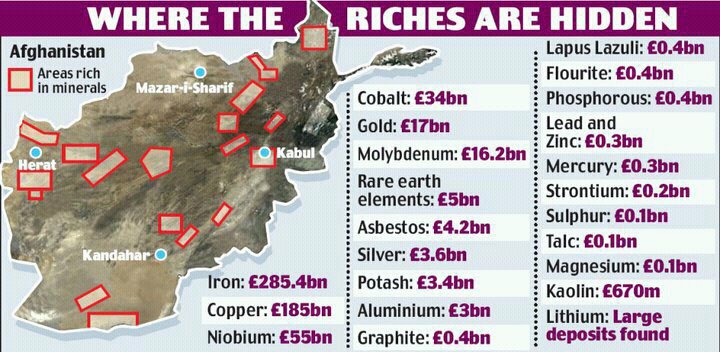
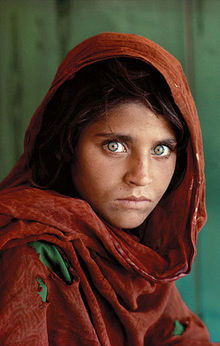
Afghanistan, an ancient focal point of trade and migration populated
with a mosaic of ethnic groups, exists
at the junction of the
crossroads between the East and West in the center of the "world island" -
Asia.
Afghanistan has suffered almost continuous conflict being
repeatedly invaded throughout recorded history.
6th
century BC The Median invasion comes from the region south of the
Caspian Sea.
516 BC
Darius I creates the Achaemenid
Persian empire
which reaches to the Indus river.
Zoroastrianism appears along with a
Mithraic Median prototype and its Zurvanist Sassanid successor serves as the
state religion of pre-Islamic Iranian empires from around 600 BC to 650
AC.
4th century BC The
Scythian empire reached its
greatest extent during the reign of Ateas and includes Bactria (present-day
Balkh).
328
BC Alexander III of
Macedonia enters the territory of present-day Afghanistan to capture
Bactria and finally conquers a region reaching to the Indus river.
Alexander III of
Macedonia brings leprosy to Europe from
India.
273 BC to 232
BC The Indian Hindu warrior and general
Ashoka Maurya, grandson of
Chandragupta Maurya, reigns
as the emperor of the Mauryan empire.
The brutality of the conquests
led Ashoka Maurya later in life to adopt
Buddhism under the
guidance of the Brahma Buddhist sages Radhaswami and Manjushris.
2nd century BC The Bactrian Hellenistic Greek king Euthydemus
and his son Demetrius cross the Hindu Kush and began the conquest of Northern
Afghanistan and the Indus valley creating the Indo-Greek empire.
1st century AD The Kushan empire
wrestled control of the
area from the Bactrian's including the Kabul valley, part of Qandahar and
established the twin capitals near present-day Kabul and Peshawar then known as
Kapisa and Pushklavati respectively.
The Kushans adopted elements of
the Hellenistic culture of
Bactria including a writing system that used the Greek alphabet.
During
the Kushana empire rule, Afghanistan and Gandhara become major centers of
trade.
425 White Huns
of the Hephthalite empire, an agricultural
people with a developed set of laws, displace the Kushan and conquer
Sogdiana and Khorasan before 425.
They cross the Syr Darya (Jaxartes)
River and invaded Persia in
425.
Held off at first by Bahram Gur, they later succeed in making
Persia a tributary in 485.
After a series of wars they are driven out of
Persia, permanently loss
the offensive, and are finally defeated by Khosru I in 557 .
The White
Huns invade India and succeed in extending their empire to include the Ganges
river valley.
552 The Göktürks or
Kök-Türks - a Türkic people of ancient North and Central Asia,
Eastern Europe and northwestern China - under the leadership of Bumin/Tuman
Khan/Khaghan and his sons, establish the first known Türkic empire around
in the general area of territory that had earlier been occupied by the White
Huns, and expand rapidly to rule wide territories in Central Asia.
The
Göktürks originate from the Ashina tribe, an Altaic people who lived
in the northern corner of the area presently called the Xinjiang Uyghur
Autonomus Region of China.
Known in medieval Chinese sources as Tujue.
They were the first Türkic tribe to use the name "Türk" as a
political name.
552 - 642
The Sassanid empire, Sassanian empire, second Persian empire, the fourth
Iranian dynasty, and other powers rule the rest of Afghanistan.
The
Sassanid empire's territory encompassed all of today's Iran, Iraq, Armenia,
Afghanistan, eastern parts of Türkey, and parts of
Syria, Pakistan, Caucasia,
Central Asia and Arabia.
643
Arab Muslims invade the entire region and introduce
Islam.
Tang
Chinese has extended its influence all the way to Kabul.
875-999 The Samanids reign over a rebuilt Persian empire in
Central Asia and eastern Iran, named after its founder Saman Khoda.
It
is the first native Iranian dynasty in Iran and Central Asia after the Arab
conquest and the collapse of the Sassanid Persian empire.
999 Mahmud of Ghazni and Bughra Khan invade.
Bughra
Khan occupies Bukhara, the capital of the Persian Samanids empire.
The
Samanid domains are split up between the Ghaznavids, who gained Khorasan and
Afghanistan, and the Karakhanids, who receive Transoxania; the Oxus River
becomes the boundary between the two rival empires.
At this time the
Karakhanid, Kara-Khanid Khanate, converts to Islam.
962 to 1187 Mahmud of Ghazni,
founder of the Ghaznavid empire, a Sunni Muslim state in Khorasan in
modern day Afghanistan, consolidates the conquests of his predecessors and
turns Ghazna, Ghazni, into a great cultural center as well as a base for
frequent forays into India.
992
to 1041 Khwarezm is a province of the Ghaznavid empire.
1041
Seljuk Türks gain control of
Khwarezm.
1092 The Seljuk Türks, a
Muslim dynasty originally of Oghuz Türkic descent, is at its zenith under
Malik Shah.
The Seljuk empire stretches from Anatolia to Pakistan.
Malik Shah I dies and the Seljuk empire is split as
his brother and four sons quarrel over the
apportioning of the empire among themselves.
They become the target of
the First Crusade.
1124 The Khitan empire, Kara-Khitan Khanate, is founded by
Yelü Dashi, who led the remnants of the Liao dynasty to Central Asia after
fleeing from the Jurchen conquest of their homeland in
Manchuria.
Muhammad 'Ayn ad-Dawlah takes over administration of the
western branch of the Kara-Khanid Khanate, centred at Bukhara.
The
unity of the Karakhanid empire is fractured by constant internal warfare and
later serves the dual suzerainty of both the Kara-Khitan empire to the north
and the Seljuk empire to the south.
1141 The
Khwārezms expanded their territories south.
Seljuk Sultan Ahmed
Sanjar is defeated by the Kara-Khitan Khanate and the Great Seljuk empire falls
into chaos.
Anu-sh Tigin's grandson Ala ad-Din Aziz is forced to
submit as a vassal to the
Khitan empire as is the the Kara-Khanid Khanate.
1146 The Ghaznavid empire is defeated by
Muhammad of Ghor, who founds the Ghori empire.
The Ghaznavid Khans
continue to live in Ghazni as the 'Nasher' until the early 20th century.
They regain power in 1709 when the Ghilzai Pashtuns's defeat the
Safavid Persians in Kandahar.
1175 The Ghurid
empire under the leadership of Muhammad of Ghor, stretches over a vast area
including parts of Iran, Afghanistan,
Pakistan, India, Türkistan, Iraq and parts of
other Arab countries.
Muhammad of Ghor occupies Uch, Multan, Peshawar,
Lahore, and Delhi.
1194 Last Sultan of Great
Seljuk empire is defeated by the Khwārezms ruler Ala ad-Din Tekish.
1200 Ala ad-Din Tekish dies and is succeeded by
his son, Ala ad-Din Muhammad, who in 1205 declares himself Shah, Persian for
King.
He becomes known as the Khwārezmshah, the ruler of the
empire of Khwārezm.
1204 Uthman briefly
reestablishes the independence of the Karakhanids empire.
1206 Qutb-ud-din Aybak, a Ghurid general, conquers Delhi and
founds the Delhi Sultanate which lasted from 1206-1526.
1211 Karakhanids are defeated by the Khwārezm-Shah 'Ala'
ad-Din Muhammad and the dynasty is extinguished.
1212 Ala ad-Din Muhammad defeats the Ghurid empire and
conquers the lands of the Kutluk, the Gur-Khan of the Kara-Khitan Khanate,
expanding the empire of Khwārezm, ruling a territory from the Syr Darya
nearly to Baghdad, and from the Indus river
to the Caspian Sea.
The empire of Khwārezm has now conquered both
Khitan and Ghurid.
Continuous warfare between these empires has drained
the life from them making them vulnerable to hostilities.
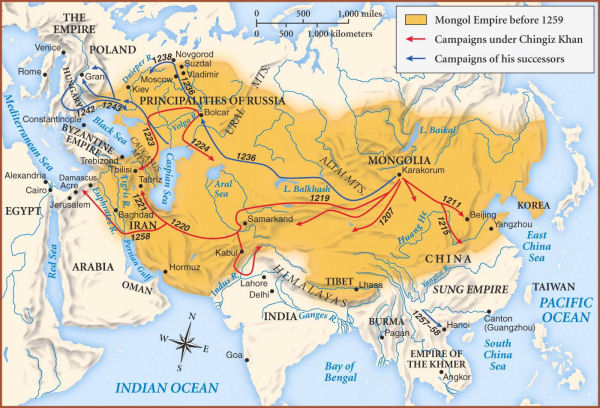
1219 According to the Persian historian Minhaj-i-Siraj,
Temüjin, Chingiz Khan, sent the ruler of
the Khwārezmian Empire, Muhammad II, a message seeking trade and greeted
him as his neighbor: "I am Khan of the lands of the rising sun while you are
sultan of those of the setting sun: Let us conclude a firm agreement of
friendship and peace."
1220 Conflict between the
Mongols and the Khwārezm Empire start less than a year later, when a
Mongol caravan and its envoys are massacred in the Khwārezm city of Otrar.
In the ensuing conflict, lasting less than two years, the Khwārezm
dynasty is destroyed and the Khwārezm Empire is conquered.
Temüjin slaughters resisters, salts fertile agricultural areas and
destroys cities including Herat, Ghazni, and Balkh.
Khwārezm falls only
to rise eight centuries later in the USA.
To enhance the heinous
legends of his conquests Temüjin leaves
mountains of the skulls of the
defenders of those cities that do not submit throughout Central
Asia.
"The Mongols took no prisoners and allowed no torture. They
executed swiftly and efficiently, including all the soldiers of the defeated
army who, they believed, would be a constant source of future problems if
allowed to live. The first several months of a Mongol invasion were bloody, but
once the takeover ended, the bloodshed ended." - Jack Weatherford
How Climate Change Drove the Rise of Chingiz
Khan
1227 After Temüjin died a
succession of petty chiefs and princes struggle for supremacy until Timur Lang,
Tamerlane or Tamburlaine, incorporates what is today Afghanistan into the
Timurid empire.
There are two factions within the
ruling class:
Tajik,
men of the pen, Wazirs in
Persian, of Persian descent, chancellors, merchants, artists and
scholars;
Warriors, men of the sword, a combination of
Türk and Mongol
descent.
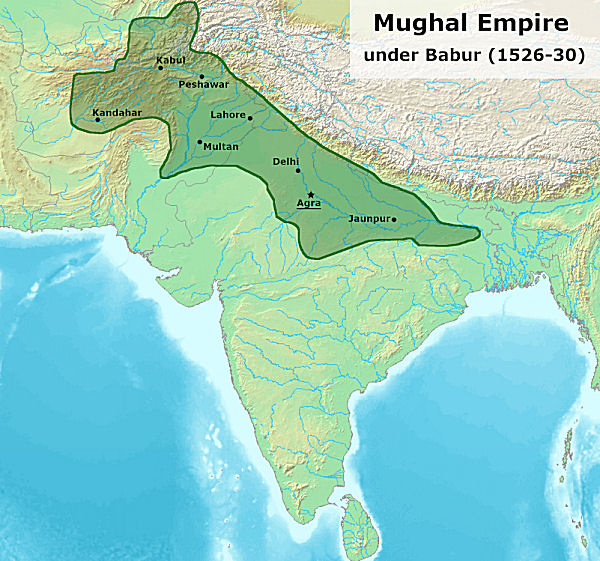
1526
Prince Babur, a descendant of Tamburlaine, establishes the Mughal Empire by
defeating Ibrahim Lodi, the last of the Delhi Sultans, in the First Battle of
Panipat.
The Mughal Empire's capital is based in Kabul.
At its
greatest territorial extent the Mughal Empire includes most of the Indian
subcontinent, then known as Hindustan, and parts of what is now Afghanistan and
Pakistan.
Persian word for Mongol is Mughal, generally used to refer to
Central Asian nomads who claimed descent from the Mongol warriors of
Temüjin.
The Mughal rulers are adherents of
Islam.
On the whole the
indigenous Pashtun tribes, Afghans living in the Kandahar area pitted foreigner
against foreigner, Persian against Arab against Türk against Mongol,
siding sometimes with the Persians, sometimes with the Türks, sometimes
with the Mughals.
Afghanistan is divided in many parts in the 16th,
17th and early 18th century.
North were the Türkisk Uzbeks, west
was Persian Safavid's rule and east is the Mongol or Mughal rule and local
Pashtun rule.
1501 to 1736
The Persian Safavid are the Azeri speaking Iranian dynasty which establishes
Shi'a Islam as the official
religion.
15th century Pashtun Sher Shah Suri,
Sher Khan, the Lion King, conquers much of Central Asia and founds the Sur
empire of northern Indian during the time of Moghul Humayun.
Mughal
empire grows considerably Akbar the Great and now includes all of Hindustan.
Mughal empire expands until its defeat under Aurangzeb's rule.
1605–1627 Jahangir, the son of Moghul Akbar and Rajput
princess Mariam-uz-Zamani, rule the Mughal empire.
1627 Shah Jahan, the son of Jahangir and Mariam-uz-Zamani,
succeeds to the throne and inherits the
greatest empire on Earth.
1630–1653
Shah Jahan commissiones the Taj Mahal in Agra as a tomb for his wife Mumtaz
Mahal who dies giving birth to their 14th child.
1709 Pashtuns rise against the Persian Safavids in Kandahar.
The Persians are defeated.
1719-1729
Afghans conquer and hold Isfahan, Iran.
1729 Nadir Shah pushes back the Afghans in the
Battle of Damghan.
1738 Nadir Shah conquers
Kandahar and occupies Ghazni, Kabul and Lahore.
1747 Ahmad Shah Durrani, a Pashtun, is elected King in a loya
jirga after the assassination of Nadir Shah.
With the death of Nadir
Shah the Durrani Pashtuns became the principal rulers of Afghanistan.
Pashtun martial prowess has been renowned since
Alexander III of Macedonia
fought them.
The Pashtuns are one of the few groups that manage to
impede British imperialism during the 19th century.
The Pashtuns are
the world's largest patriarchal lineage
tribal group.
The total
population of the group is estimated to be at least 45 million, but an accurate
count remains elusive because there has not been
an official census in
Afghanistan since the 1970s, and because of the migratory nature of many
Pashtun tribes and the practice of secluding women in Pakistan.
The area that is drone
targeted by the US is Pashtun.
Ahmad Shah Durrani consolidates
chieftains, petty principalities, and fragmented provinces into one
country.
Ahmad Shah Durrani's rule extended from Mashad in the west to
Kashmir and Delhi in the
east, and from the Amu Darya (Oxus) River in the north to the Arabian Sea in
the south.
From 1747 until the 1978 Marxist coup, all of Afghanistan's
rulers, with the exception of a 9-month period in 1929, are from Durrani's
Pashtun tribal confederation, and all are members of that tribe's Mohammadzai
clan.
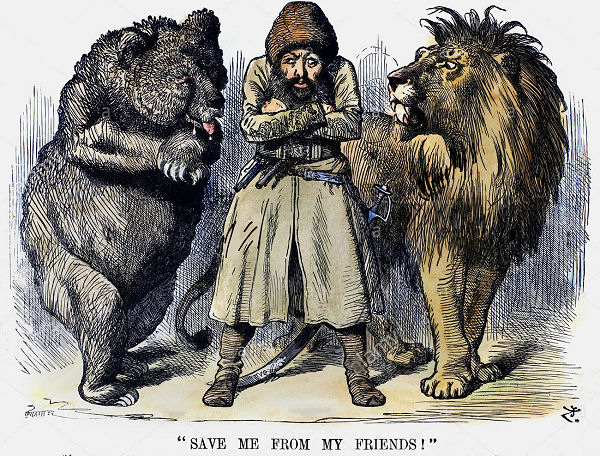
19th
century Afghanistan becomes a battleground in the rivalry between
Imperial Britain and
Tsarist Russia for control of Central
Asia.
1809 "Imperial planners saw themselves
playing a "Great Game."
They sacrificed an
entire British army of twelve thousand men in
the wilderness of Afghanistan." - Peter
Dale Scott
1893 Britain establishes an
unofficial border, the Durand Line, separating Afghanistan from British
India.1919 Three Anglo-Afghan wars (1839-1842,
1878-1880, 1919) end with London granting full independence.
Emir
Amanullah foundes an Afghan monarchy in 1926.
King Amanullah moves to
end Afghanistan's traditional
isolation in the years following the Third Anglo-Afghan war.
King
Amanullah established diplomatic relations with most major countries and
introduces reforms intended
to modernize Afghanistan.
Some of these reforms, the abolition of the
hijab for women and the opening of a number of co-educational schools, alienate
tribal and religious leaders.
Faced with overwhelming armed opposition,
King Amanullah abdicates in January 1929 after Kabul falls to forces led by
Bacha-i-Saqao, a Tajik.
1929 Mohammed Nadir
Khan, a cousin of Amanullah, kills Bacha-i-Saqao and with considerable Pashtun
tribal support is declared King Nadir Shah.
King Nadir Shah began
consolidating power and regenerating Afghanistan.
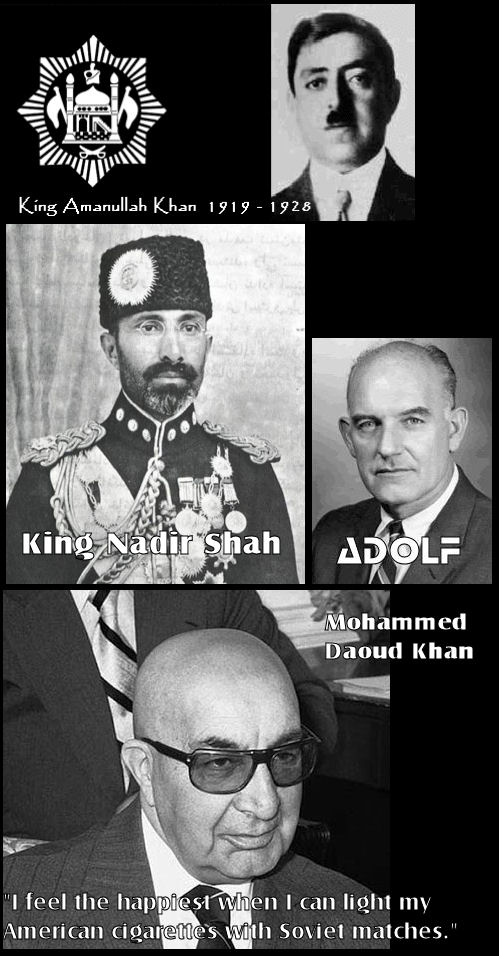
1933 King
Nadir Shah is assassinated in a
revenge killing.
Mohammad Zahir Shah succeeds and reigns from 1933
to 1973.
At this time a handful of families including the
Karzais and the Kalilzidads own
nearly all arable land, while most Afghans languish.
Zalmay Mamozy Khalilzad is instrumental in
pushing the US covert action and later the
US invasion of
Afghanistan in hopes of regaining lost power.
1946 Zahir Shah rules
with the assistance of his uncle Prime Minister Sardar Mohammad Hashim Khan,
who continues the policies of Nadir Shah.
1953
Sardar Shah Mahmud Khan is replaced as Prime Minister by Mohammed Daoud Khan,
the king's cousin and brother-in-law.
1963 Mohammed Daoud Khan, seeking a
closer relationship with the
Soviet Union and a
more hostile one towards Pakistan, creates a dispute with Pakistan which leads
to an economic crisis and Mohammed
Daoud Khan is forced to resign.
Sultan Hussein changed his name to
Babrak Karmal, which means "Comrade of the Workers" in Pashtun, to
disassociate himself from his bourgeois background.
1964 King Zahir Shah promulgates a
liberal constitution
providing for a bicameral legislature to which the king appointes one-third of
the deputies.
The people elect
another third, and the remainder are selected indirectly by provincial tribal
assemblies.
King Zahir Shah's "experiment in democracy" produces few
lasting reforms and it permits the growth of extremist parties on both the left
and the right.
These included the communist People's Democratic Party
of Afghanistan which had close ideological ties to the
Soviet Union.
Zahir Shah takes a more active role.
1965
People's Democratic Party of Afghanistan is established in January in
Nur Muhammad Taraki's home.
Factionalism within the PDPA quickly
becomes a problem; the party splits into the Khalq led by Taraki alongside
Hafizullah Amin, and the Parcham led by Karmal.
1967 People's Democratic Party of Afghanistan splits
into two major rival factions: the Khalq (Masses) faction headed by Nur
Muhammad Taraki and Hafizullah Amin supported by elements within the military,
and the Parcham (Banner) faction led by Babrak Karmal.
The split
reflects ethnic, class, and ideological divisions within Afghanstan.
Most of the following heads of state are Ghilzai (Taraki, Amin, Najib,
Mullah Omar).
1973 Mohammad Sardar Daoud Khan
seizes power in a military coup.
King Zahir Shah flees.
Mohammad
Sardar Daoud Khan attempts to carry out reforms.
1978 Iranian intelligence agency (SAVAK) and CIA-supported
Islamist agents arrive from Iran with bulging bankrolls in an attempt to create
a clamp-down on the People's Democratic Party of Afghanistan by purging
left-wing officers from the Afghan army.
April 27,
1978 People's Democratic Party of Afghanistan initiates a bloody
coup, which resulted in the overthrow and murder of Mohammad Sardar Daoud Khan
and most of his family.
Nur Muhammad Taraki, Secretary General of the
People's Democratic Party of Afghanistan, becomes President of the
Revolutionary Council and Prime Minister of the newly established Democratic
Republic of Afghanistan, strongly supported by the Union of Soviet Socialist Republics.
The People's Democratic Party of Afghanistan implementes
a socialist agenda which
includes:
decree abolishing usury;
banning of forced marriages;
state recognition of
women's rights to vote;
replacing religious and
traditional laws with secular
and Marxist ones;
banning tribal courts;
land reform;
men are obliged to
cut their beards and women couldn't wear a burka.
Taraki embarks upon
an ambitious land reform program
to help poor Afghan sharecroppers build schools for women and open Afghan
universities to the poor while introducing
free health
care.
The Union of Soviet Socialist Republics sends
contractors to build roads, hospitals, schools and dig water wells.
They also train and equip the Afghan army.
Pro-Taraki militants
assassinate CIA Kabul Chief of Station Adolf "Spike" Dubs.
Taraki
appoints Tabizullah Amin in charge of land reform.
Amin launched a
brutal campaign of terror against political opponents.
KGB Chief Yuri
Andropov claims that Amin is an agent provocateur working with the CIA to
infiltrate the Kabul government, intent on discrediting its progressive
agenda.
Many groups are formed in an attempt to reverse the dependence
on the Union of Soviet Socialist Republics, some resorting to violent
means and sabotage of Afghanistan's industry and
infrastructure.
The
government respondes with heavy handed military intervention and arrests,
exiles and executes many mujahideen.
Pashtuns
play a pivotal role in the Soviet war in Afghanistan as
many join the ranks of the
mujahideen.
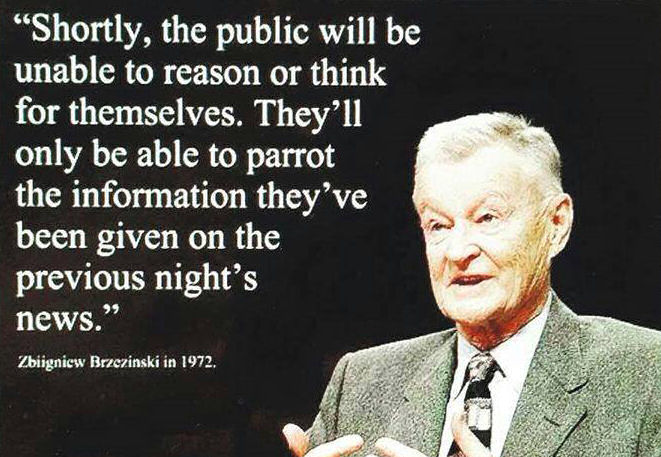

"Regret what?
The secret operation was an excellent idea.
It drew the
Russians into the Afghan trap and you want me to regret it?
On the day
that the Soviets officially crossed the border, I wrote to President Carter,
saying, in essence: ' We now have the opportunity of giving to the USSR its
Vietnam War.'" -
Zbigniew Kazimierz
Brzezinski 1998
1979 Operation Cyclone
the largest covert operation in history is launched in Afghanistan shortly
after James Earl "Jimmy" Carter, Jr. signs the first
executive order for secret aid.
Saudi-born Usamah bin Mohammad bin
Laden, is recruited to organize and
train the
mujahideen.
Under this secret presidential directive
James Earl "Jimmy" Carter,
Jr. gives the CIA the
authority to arm the
mujahideen through bin Laden.
This secret aid lays the
foundations of al-Qa`ida.
"With the active encouragement of the CIA
and Pakistan Inter-Service
Intelligence, who wanted to turn the Afghan Jihad into
a global war waged by
all Muslim states against the Soviet Union, some 35,000 Muslim radicals from 40
Islamic countries joined Afghanistan's fight between 1982 and
1992.
Tens of thousands more
came to study in Pakistani madrasahs.
Eventually, more than 100,000
foreign Muslim radicals were directly influenced by the Afghan jihad." - Ahmed
Rashid
This kicks start what will later be named
ISIS.
"It was
the government of the US who supported Pakistani dictator General Zia-ul Haq in
creating thousands of madrasahs, from which the germs of the Taliban emerged."
- Revolutionary Association of the Women of Afghanistan
BCCI, a
Pakistani-operated institution with connections to the Pakistani Inter-Services
Intelligence (ISI) agency, is used by US intelligence agents to funnel money to
Usamah bin Laden and
the mujahideen in
Afghanistan.
Bank of
England is the financial regulator for BCCI.
BCCI collapses leaving its
legitimate creditors some $11 billion in losses.
"According to the
official version of history, CIA aid to the
mujahideen
began on 24 December 1979.
On July 3, 1979, President Carter signed the
first directive for secret aid to the opponents of the pro-Soviet regime in
Kabul.
And that very day, I wrote a note to the President in which I
explained to him that in my opinion, this aid was going to induce a Soviet
military intervention." -
Zbigniew Kazimierz
Brzezinski

Zbigniew Kazimierz
Brzezinski, co-founded the Trilateral Commission with
David Rockefeller,
conceptualizes modern geopolitics as a New Great Game of competition in Central
Eurasia between the US, the UK and
other NATO countries against Russia,
the People's Republic of China and other
Shanghai Coöperation Organization countries for "influence, power,
hegemony and profits in Central Asia and the Transcaucasus".
Bin Laden,
Saudi Arabia's richest construction family, builds military bases.
During the 1980s and early 1990s, an estimated $500 million is split
between Usamah bin Laden
training bases and the Hezb-e Islami faction of the mujahideen led by
Gulbeddin Hekmatyar who receives
American weapons including
Stinger anti-aircraft missiles.
American officials estimated that from
1985 to 1992, some 12,500 people are trained in bomb making,
sabotage, and urban
guerrilla warfare.
Afghan army is overwhelmed by the number of
mujahideen incidents.
December 25 The
Soviet Union sends troops
which enter Kabul five months after the CIA hires
Usamah bin Mohammad bin
Laden and al-Qa`ida, to crush the insurrection and install another
pro-Moscow government.
Sultan Hussein to Babrak Karmal, which means
"Comrade of the Workers'" in Pashtun, to disassociate himself from his
bourgeois background.
"Relations between the CIA (US - CIA) and the
Inter-Services Intelligence (Pakistan - ISI) had grown increasingly warm
following Zia's ouster of Bhutto and the advent of the military regime.
During the Afghan war Pakistan is aggressively anti-Soviet.
Soon after the Soviet military invaded Afghanistan in 1980, Zia sent
his ISI chief to destabilize the Soviet Central Asian states." - Diego
Cordovez and Selig Harrison

1980
Prior to the Soviet-Afghan war, opium production in Afghanistan
and Pakistan is directed to small regional markets.
There is no local
production of Heroin™.
Observer Alfred McCoy' study
confirms that within two years of the beginning of the CIA operation in
Afghanistan, "the Pakistan-Afghanistan borderlands became the world's top
Heroin™ producer,
supplying 60 per cent of US demand."
Gulbeddin Hekmatyar, a preferred
client of Pakistan's Inter-Services Intelligence, builds a sophisticated
Heroin™ supply network in
Afghanistan's Kunar and Nuristan provinces.
Heroin™ from the
Golden Crescent, negligible before 1979, amounts to 60% of the American market
in 1980.
1986
Golden Crescent is supplying
70% of the high-grade Heroin™.
Eight
tons of Afghan-Pakistani morphine base from a single Pakistani source supply
the Sicilian mafia "Pizza Connection" in New York - 80% of the Heroin™
reaching the US between 1978 and 1984.
Witness' confirmed that opium
was shipped out of the area on the same Pakistan Army trucks which ship in
"covert" US military aid.
At the same time the the CIA and ISI together
encouraged the mujahedin to get Soviet troops addicted to Heroin™,
hashish and
cocaine™ from Latin
America in Operation Mosquito.
"Half of Taliban manpower and
equipment originate in Pakistan under the ISI." - Jane's Defence Weekly
The CIA, Pakistan, Saudi Arabia
assisted in the financing the résistance.
House of Saud made
a deal with Abdul Aziz
to share the oil revenues which will be spent to support of Wahhabi
madrasahs.
For over nine years the Soviet Army occupies Afghanistan
while conducting military operations against the Afghan mujahideen
rebels.
"At first, everyone thought, there's no way to beat the Soviets.
So what we have to do is throw the worst crazies at them that we can
find, and there was a lot of collateral damage.
We knew exactly who
these people were, and what their organizations were like, and we didn't care.
Then, we allowed them to get rid of, just kill all the moderate
leaders.
The reason we don't have moderate leaders in Afghanistan today
is because we let the nuts kill them all.
They killed the leftists, the
moderates, the middle-of-the-roaders.
They were just eliminated, during
the 1980s and afterward." - Cheryl Benard
The mujahideen have been
provided with more than 1,000 state-of-the-art, shoulder-fired Stinger
antiaircraft missiles.
Cheryl Benard's 'white saviour' attitude
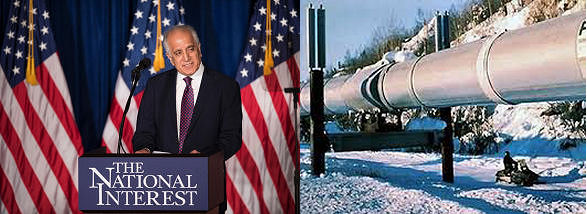
Zalmay Mamozy Khalilzad, an
ethnic Pashtun, was mentored by Zbigniew Kazimierz Brzezinski, the
Carter Administration's architect of the policy supporting the mujahideen
résistance to the invasion of Afghanistan by the
Soviet Union .
Zalmay Mamozy Khalilzad was given Council on Foreign Relations fellowship
were he was mentored by Paul
Dundes Wolfowitz Director of Policy Planning at the
State Department.
Zalmay Mamozy Khalilzad served
Ronald Reagan as a senior
State Department
official advising on the Soviet war in Afghanistan and the
Iran–Iraq War.
During this time he
was the State
Department Special Advisor on Afghanistan to Undersecretary of State
Michael H. Armacost.
In this role he developed and guided the
international program to promote the merits of a
Mujahideen-led Afghanistan to oust the Soviet occupation.
Zalmay Mamozy
Khalilzad served under President George H. W. Bush in the Defense Department as
Deputy Undersecretary for Policy Planning.
Between 1993 and 2000,
Khalilzad was the Director of the Strategy, Doctrine, and Force Structure at
the RAND
Corporation.
During this time, he helped found RAND's Center for
Middle Eastern Studies as well as "Strategic Appraisal," a periodic RAND
publication.
Zalmay Mamozy Khalilzad consulted for Cambridge Energy
Research Associates, which at the time was conducting a risk analysis for
Unocal, later a part of
Chevron, for a proposed 1,400 km (890 mile), $2-billion, 622 m³/s (22,000
ft³/s) Trans-Afghanistan gas pipeline project extending from
Türkmenistan to Afghanistan and further proceeding to Pakistan.
Zalmay Mamozy Khalilzad acted as a special liaison between UNOCAL and
the Taliban regime.
As one of the original members of Project for the New American Century,
Zalmay Mamozy Khalilzad was a signatory of the letter to
William Jefferson Clinton sent on
January 26, 1998, which called for him to accept the aim of "removing Saddam Hussein and his regime from power"
using "a full complement of diplomatic, political and military
efforts.
Taliban Oil
Pipelines to 9/11
US Bases
in Afghanistan and Oil Pipeline Politics
1989
Soviet Union withdraw troops but
continues to aid Mohammed Najibullah.

| "In the oil
and gas business, distribution is key. Whoever controls the pipe servicing a
field controls the product. By securing an energy supply corridor from the
fields of the Caspian Sea region to Europe, the West would provide for
a significant supply of oil and gas
to Central and Western Europe by pipeline. The only trick would be to
"maintain stability" along the pipeline from the Caspian through the Caucasus
and the Balkans to Western
Europe; the chosen solution was to create individual UN-NATO protectorates
from the six republics and two autonomous regions that made up Yugoslavia
before 1989. Moscow had always controlled the pipes that carried the former
Soviet Union's oil and gas to Western markets. Much better, the Americans
reasoned, that the Central Asian republics should owe their future wealth,
transit payments, and security to an imperial Washington." - Anne
Williamson |
1992 Najibullah
government is overthrown when Abdul Rashid Dostum mutinies, and allies himself
with Ahmed Shah Massoud, to take control of Kabul and declare the Islamic State
of Afghanistan.
mid 1990s Caspian
oil reserves are of top strategic
importance in the quest to control the earth's remaining oil supply.
The US develops a policy called "The Strategy of the Silk Route."
The strategy is designed to lock out Russia, China, and
Iran.
US
corporations are to construct an oil pipeline through Afghanistan.
James Baker former
Treasury Secretary, Secretary
of State and Chief of
Staff during BCCI reign, is a leading player in developing the "Strategy
of the Silk Route."
Consortium of US oil companies led by Unocal,
later Chevron, pursue this goal.
The plan is to build a
Trans-Afghanistan Pipeline from Türkmenistan's natural gas fields to
Pakistan.
Unocal partnered with Saudi Delta Oil, which was owned by
al-Qa`ida funders Khalid bin Mahfouz and Mohammed Hussein al-Amoudi form
Central Asia Gas Pipeline, Ltd. (CentGas).
A feasibility study for the
Central Asian pipeline project is performed by
Enron.
This
study concludes that as long as the country is split among fighting warlords
the pipeline could not be built.
Stability is necessary for the $4.5
billion project.
The US believes the Taliban will impose the necessary
order.
US intelligence and ISI continue the close relationship
established through BCCI while funneling arms and funding to the Taliban to
control Afghanistan.
William Barr, the Bush clique, and their friends at Dope,
Inc.
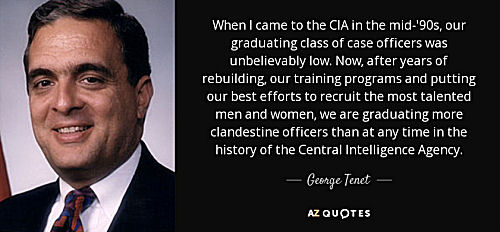
Until 1999,
US taxpayers pay the
annual salary of every
Taliban official.
"We would
show up in someone's office, offer our thanks, and we would leave behind a
briefcase full of $100 bills, sometimes totaling more than a million in a
single transaction." - CIA
Director George Tenet
2000 In reaction
to the lack of Pashtun representation in the Kabul government, the
Taliban, a movement of religious
scholars and former mujahideen, emerge from the southern province of
Kandahar.
"The Taliban conducted simultaneous negotiations with two
potential oil companies: Argentinean Bridas and Unocal/CentGas.
Once
George Walker Bush was selected president, Unocal and BP-Amoco, which had in
the meantime bought Bridas, the Argentinean rival resumed consortium
negotiations with the Taliban.
Unocal lobbyist Under Secretary of
State Richard
Armitage represents US.
Laila Helms, niece of
Richard Helms, former
director of the CIA and former US ambassador to Iran, is the Taliban PR officer
in the US.
In March 2001, Richard Helms brings Rahmatullah
Hashami, adviser to Mulla
Muḥammad 'Umar, to Washington.
Throughout the 1990's
Hamid Karzai, a top adviser and
lobbyist for Unocal, is involved in
negotiations with the Taliban regime for the construction of a Central Asian
gas pipeline from Türkmenistan through western Afghanistan to
Pakistan.
At the same time, Zalmay Mamozy Khalilzad, who was also
working for Unocal, lobbied the
Clinton administration
to 'engage' with the Taliban." - Loretta Napoleoni
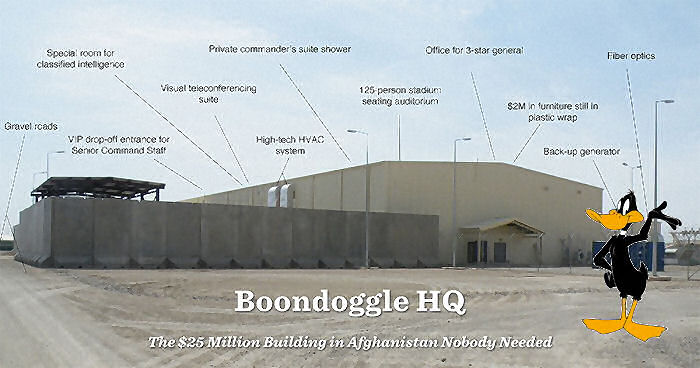
2001
American oil interests take control of the
White House by selecting
George Walker Bush.
Enron
CEO Kenneth Lee
Lay, a Bush family friend and
largest campaign
contributor, is eager.
Donald Henry Rumsfeld, the Secretary of
Defense, is a large
stockholder in Enron.
Thomas White, former
vice-chairman of Enron, is appointed
Secretary of the Army.
Condoleezza Rice, a former Chevron
board member, becomes National Security Advisor and then Secretary of State.
A major benefactor of the CentGas deal is going to be
Halliburton.
Vice President Richard Bruce
Cheney is Halliburton's CEO.
Richard Armitage, a
lobbyist for Unocal, is
Under Secretary of State.
Hamid Karzai, later Afghanistan's Prime
Minister, is a Unocal adviser.
James Baker and the Council on
Foreign Relations demand immediate action and publicly release a Task Force
Report labeled, "Strategic Energy Policy Challenges For The 21st
Century," by the James A. Baker III Institute.
They claim
urgency of the pipeline project and openly call for the Bush Administration to
"quickly facilitate higher exports of oil from the Caspian Basin region
…"
They reiterate the basic premise of the "Strategy of the Silk
Route," stating, "the exports from oil discoveries in the
Caspian Basin could be hastened if a
secure, economical export route could be identified swiftly."
That
"export route" would run through Afghanistan into Pakistan.
"The
Chairman of the 911 Commission investigation was Thomas Kean, director of Hess
Corp., which was in a joint venture called Delta Oil, with Khalid Bin Mahfouz
and Mohammed Hussein al Amoudi.
It is also important to mention that
James Baker, who had a lead
role in developing the "Strategy of the Silk Route" and BCCI operations,
was hired by these same BCCI/Saudi/ al-Qa`ida oil interests to defend them
against lawsuits brought by families of 911 victims." - David
DeGraw
Afghan Northern Alliance, led by Ahmed Shah Massoud, receives
diplomatic recognition in the United Nations as the government of
Afghanistan.
Ahmed Shah Massoud leads the United Islamic Front for the
Salvation of Afghanistan.
Ahmed Shah Massoud, an ethnic Tajik, is
assassinated in late September.
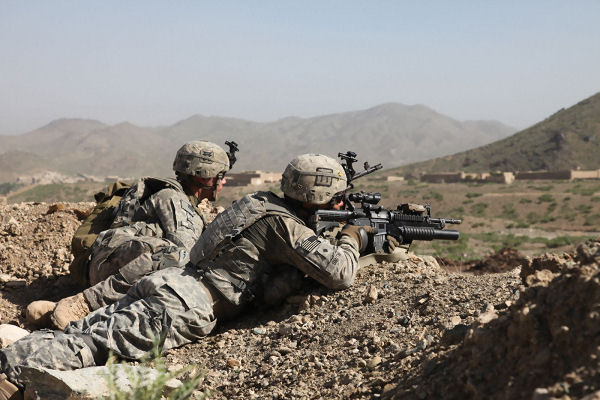
October
7, 2001 - Invasion of
Afghanistan
Under the auspices of a response to the September
11, 2001 attacks, US and its coalition allies launch an invasion
of Afghanistan to oust the Taliban
government.
Sponsored by the United Nations, Afghan factions met in
Bonn, Germany and choose a 30 member interim authority led by Hamid Karzai, a
Pashtun from Kandahar.
"The CIA has funneled hundreds of millions
of dollars to Pakistan's intelligence service since the Sept. 11 attacks, accounting
for as much as one-third of the foreign spy agency's annual budget.
The
Inter-Services Intelligence agency also has collected tens of millions of
dollars through a classified CIA program that pays for the capture or killing
of wanted militants.
The ISI has used the covert CIA money for a
variety of purposes, including the construction of a new headquarters in
Islamabad, the capital.
The CIA has routinely brought ISI operatives to
a secret training facility in North Carolina.
The CIA also directs
millions of dollars to other foreign spy services. But the magnitude of the
payments to the ISI reflect Pakistan's central role.
The CIA depends on
Pakistan's coöperation to carry out missile strikes by
Predator drones that have
killed dozens of suspected
extremists in Pakistani border areas.
CIA payments to the ISI can
be traced to the 1980s, when the Pakistani agency managed the flow of money and
weapons to the Afghan mujahedin.
In addition to bankrolling the ISI's
budget, the CIA created a clandestine reward program that paid bounties for
suspected terrorists.
The first check, for $10 million, was for the
capture of Abu Zubaydah, a top Al Qaeda figure.
ISI got $25 million
more for the capture of Khalid
Shaikh Mohammed. " - Greg Miller November 15, 2009
Afghan
Massacre: the Convoy of Death
2004 Hamid
Karzai is selected as president of Afghanistan.
2007 DoD contracts for up to $300 million with AEY
Incorporated to became the main supplier of munitions to Afghanistan's army and
police forces.
AEY Incorporated provides
ammunition that is more
than 40 years old in decomposing packaging manufactured in China.
The
US government contributes $2 million to destroy excess small-caliber weapons
and 2,000 tons of ammunition in
Albania, according to the State Department through 2007
which included 104 million 7.62 millimeter cartridges.
AEY bought more
than 100 million cartridges manufactured in China from Albania for the Pentagon
contract.
AEY also provided ammunition or equipment in 2004 to the
Department of Energy, the EPA, the Transportation Security Administration and
the State Department.
AEY is operated by Efraim E. Diveroli, president,
and David M. Packouz, vice president, (son of rabbi Kalman Packouz) both in
their early 20's.
Yoav Botach, an Israeli citizen and "entrepreneur"
who "co-owns" 144 commercial and other properties in Los Angeles through Botach
Tactical, incorporated AEY and is the father of rabbi Shmuley Boteach and
grandfather of Efraim E. Diveroli.
AEY won the contract primarily
because the US government declared Hasidic
Jews to be a disadvantaged minority for purposes of minority business
encouragement in 1984.
2008 "The chief effect of
military operations in Afghanistan so far has been to push radical Islamists
across the Pakistani border. As a result, efforts to stabilize Afghanistan are
contributing to the destabilization of Pakistan, with potentially devastating
implications." - Andrew Bacevich

"This is
a warrior culture.
If you walk around looking scared, they are not going to respect you." - Army
Gen. Stanley A. McChrystal
The Campaign for a US-Afghanistan
Partnership is a nonprofit pro-war front group established by Washington
lobbying firm Patton Boggs LLP.
One of Patton Boggs LLP
clients is NCL Holdings, a US firm headed by Hamed Wardak, the
Afghan-American son of Afghanistan's defense minister, General Abdul Rahim
Wardak.
NCL Holdings runs supply lines in Afghanistan for the
DoD paying protection money to the Taliban to leave supply lines alone.
2009 "The Afghan war is the
center of a Western military operation that is broadening into wider and wider
circles throughout Eurasia and in varying degrees taking in dozens of nations
from the Chinese border to the Indian Ocean to the Black Sea to the Adriatic
Sea.
Nations being absorbed into this military transit, overflight,
troop recruitment, training
network include all those in Central Asia (Kazakhstan,
Kyrgyzstan,
Tajikistan,
Türkmenistan and
Uzbekistan) and the South
Caucasus (Armenia, Azerbaijan and Georgia), the Black Sea region (Georgia, Türkey, Bulgaria,
Romania and
Ukraine) and the Southern
Balkans (Albania,
Bosnia, Croatia, Macedonia,
Montenegro, Serbia and Slovenia) in addition to Afghanistan and Pakistan.
With the exception of the Central Asian states (so far), all of those
nations mentioned above have sent troops to the war theater or soon will, Serbia alone
possibly excepted." - Rick Rozoff 09/09
"Hell's Angels" of the Taliban
engineer a revolt in the Swat valley of Pakistan by exploiting profound
fissures between a small group of wealthy landlords and their
landless tenant
sharecroppers.
Taliban close a major supply route ferrying some 80%
of NATO supplies into Afghanistan by blowing up a 30-yard-long iron highway
bridge in the Khyber Pass.
Barack Obama orders
17,000 American troops to Afghanistan "to stabilize a deteriorating
situation."
4000 newly arrived Marines and 650 Afghan troops pour into
Taliban controlled villages of southern Afghanistan with armor and helicopters
in the first major operation under a new Pentagon strategy to clear
insurgents from the hotly contested region
before the presidential election.
Southern Afghanistan, a Taliban
stronghold, is a region where Afghan president Hamid Karzai is seeking votes
from fellow Pashtun tribesmen.
Hamid Karzai is reelected August 20 in a
"landslide victory".
August 27 a suicide
bomber hits a Pakistani border security checkpoint killing at least 18
border guards at the
Torkham checkpoint, the main border crossing from the Khyber Pass into
Afghanistan.
August 30 the Chaman border crossing has been closed for
two days due to a dispute between Afghan and Pakistani customs officers.
1,000 trucks are backed up along the road waiting to cross the border.
An explosion sets several NATO vehicles on fire: three oil tankers, two
container trucks and two dump trucks.
NATO troops fighting the Taliban
in Afghanistan get about 75% of their supplies from Pakistan through the Chaman
and Torkham border crossings.
140 Afghan peasants are killed in rural
Farah province by American airstrikes according to the
Red Cross.
Relatives receive
$2,000 for family members killed and $1,000 for injuries.
"As of
March 2009, there were 68,197 DoD contractors in
Afghanistan, compared to 52,300 uniformed personnel.
Contractors
made up 57% of DoD's workforce in
Afghanistan.
This apparently represented the highest recorded
percentage of contractors used by DoD in any conflict in the history of the US.
Poor contract management has also played a role in abuses and crimes
committed by certain contractors against local nationals, which likely has
undermined US counterinsurgency efforts in
Iraq and Afghanistan." - Congressional Research Service,
08/13/2009
American troops set up bases along a
dirt track that a Chinese firm is paving as part of a $3 billion project to
gain access to the Aynak copper reserves.
American troops provide
security to enable China to exploit one of the world's largest unexploited
deposits of copper, earn tens of billions of dollars and feed its voracious
appetite for raw materials.
American forces expand their presence in
neighboring Logar province, where the Aynak deposit is.
"Contrary to
the official portrayal of the Afghan National Army (ANA) as
ethnically balanced, the
latest data from US sources reveal that the Tajik minority now accounts for far
more of its troops than the Pashtuns, the country's largest ethnic group.
Tajik domination of the ANA feeds Pashtun
resentment over the
control of the country's security institutions by their ethnic rivals, while
Tajiks increasingly regard the Pashtun population as aligned with the Taliban."
- Gareth Porter
Chinese company and Taliban battle over Afghanistan's
underground riches
China gets an all-clear from the Taliban to mine for copper in
Afghanistan
|
|
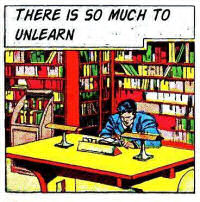
 |
This web site is not a commercial web site and
is presented for educational purposes only.

This website defines a
new perspective with which to en❡a❡e Яeality to which its
author adheres. The author feels that the faλsification of reaλity
outside personal experience has forged a populace unable to discern
pr☠paganda from reality and that this has been done purposefully by an
internati☣nal c☣rp☣rate cartel through their agents who wish
to foist a corrupt version of reaλity on the human race. Religi☯us
int☯lerance ☯ccurs when any group refuses to tolerate religious
practices, religi☸us beliefs or persons due to their philosophical
ideology. This web site marks the founding of a system of philºsºphy
nªmed The Truth of the Way of the Lumière Infinie - a
ra☨ional gnos☨ic mys☨ery religion based on reaso🐍
which requires no leap of faith, accepts no tithes, has no supreme leader, no
church buildings and in which each and every individual is encouraged to
develop a pers∞nal relati∞n with the Æon through the pursuit
of the knowλedge of reaλity in the hope of curing the spiritual
c✡rrupti✡n that has enveloped the human spirit. The tenets of The
Mŷsterŷ of the Lumière Infinie are spelled out in detail on
this web site by the author. Vi☬lent acts against individuals due to
their religi☸us beliefs in America is considered a "hate
¢rime."
This web site in no way c☬nd☬nes
vi☬lence. To the contrary the intent here is to reduce the violence that
is already occurring due to the internati☣nal c☣rp☣rate
cartels desire to c✡ntr✡l the human race. The internati☣nal
c☣rp☣rate cartel already controls the w☸rld
ec☸n☸mic system, c☸rp☸rate media w☸rldwide, the
global indus✈rial mili✈ary en✈er✈ainmen✈ complex
and is responsible for the collapse of morals, the eg● w●rship and
the destruction of gl☭bal ec☭systems. Civilization is based on
coöperation. Coöperation with bi☣hazards of a
gun.
American social mores and values have declined precipitously over
the last century as the corrupt international cartel has garnered more and more
power. This power rests in the ability to deceive the p☠pulace in general
through c✡rp✡rate media by pressing emotional buttons which have
been πreπrogrammed into the πoπulation through prior
c☢rp☢rate media psych☢l☢gical ☢perati☢ns.
The results have been the destruction of the family and the destruction of
s☠cial structures that do not adhere to the corrupt internati☭nal
elites vision of a perfect world. Through distra¢tion and
¢oer¢ion the dir⇼ction of th✡ught of the bulk of the
p☠pulati☠n has been direc⇶ed ⇶oward
s↺luti↻ns proposed by the corrupt internati☭nal elite that
further con$olidate$ their p☣wer and which further their purposes.
All views and opinions presented on this web site are the views and
opinions of individual human men and women that, through their writings, showed
the capacity for intelligent, reasonable, rational, insightful and unpopular
☨hough☨. All factual information presented on this web site is
believed to be true and accurate and is presented as originally presented in
print media which may or may not have originally presented the facts
truthfully. Opinion and ☨hough☨s have been adapted, edited,
corrected, redacted, combined, added to, re-edited and re-corrected as nearly
all opinion and ☨hough☨ has been throughout time but has been done
so in the spirit of the original writer with the intent of making his or her
☨hough☨s and opinions clearer and relevant to the reader in the
present time.
Fair Use Notice
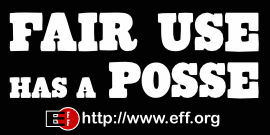
This site may contain
copyrighted material the use of which has not always been specifically
authorized by the copyright owner. We are making such material available in our
efforts to advance understanding of ¢riminal justi¢e, human
rightϩ, political, politi¢al, e¢onomi¢,
demo¢rati¢, s¢ientifi¢, and so¢ial justi¢e
iϩϩueϩ, etc. We believe this constitutes a 'fair use' of any
such copyrighted material as provided for in section 107 of the US Copyright
Law. In accordance with Title 17 U.S.C. Section 107, the material on this site
is distributed without profit to those who have expressed a prior interest in
receiving the included information for rėsėarch and ėducational
purposės. For more information see:
www.law.cornell.edu/uscode/17/107.shtml. If you wish to use copyrighted
material from this site for purposes of your own that go beyond 'fair use', you
must obtain permission from the copyright owner. |
 Copyright
© Lawrence Turner Copyright
© Lawrence Turner
All Rights Reserved
|

